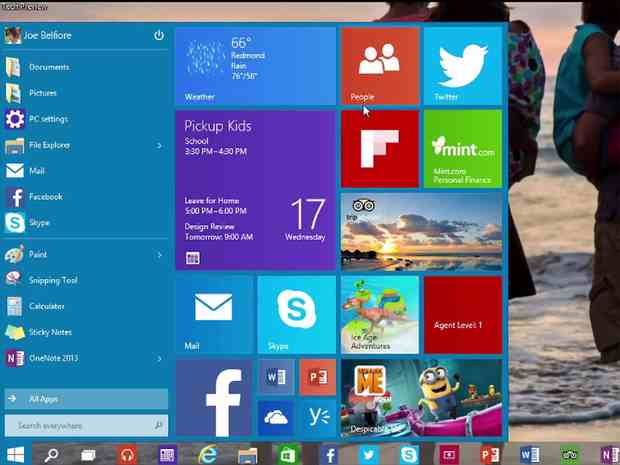Microsoft is pinning its high hopes on Windows 10 when it officially launches its latest operating software on July 29.
Three years after the launch of the much-maligned Windows 8, the Redmondian company believes that the key to its redemption is Windows 10. Though highly innovative and full of great futures, many people, who have been so used to using Windows OS, were turned off by Windows 8 when it dumped the classic Start Menu for the Start Screen.
The Windows 8 treated the familiar desktop as merely an afterthought and revamped the interface with a slew of confusing and hidden features, details C/Net.
As a result, PC sales, which were already on the decline at that point in time, further slipped with the advent of the Windows 8. The new Windows OS was not user-friendly, to say the least, so without the Apple doing much, a number of PC users actually shifted to using Macs.
Over at the mobile OS market, Microsoft is not doing any better either as Google’s Android and Apple’s iOS are dominating the market, with Windows a distant third or may even be fourth, next to CyanogenMod OS.
Unifying software
Windows 10 may also be Microsoft’s last and best hope of winning over more smartphone users as the company plans to make it a unifying software both for personal computers and mobile devices.
It is for this reason that Microsoft has been pushing its ‘One Windows’ mantra for all its devices with OS to be linked with one another including PC, smartphone, tablet, and even gaming console.
In response to the complaints and clamor of millions of PC users all over the world, Microsoft will be bringing back the Start Menu on Windows 10. Latest builds or beta version of the Windows 10, according to testers, were excellent as it is quick to navigate and easy to manage, so unlike Windows 8.
While initial feedbacks of testers indicate that Windows 10 was just a Windows 8 version modified to integrate the features of Windows 7, the new features of the upcoming operating system are quite overwhelming enough to indicate that it is more than just an upgraded Windows 8 edition.
Since releasing its technical preview late last year and subsequent builds the following months thereafter, Windows 10 has significantly improved build after build and it really now appears ready to take back the PC market and create a stir in the mobile market.
Current builds of the Windows 10 enable users to use different apps and features such as Mail, Music, and the Windows Store with hardly any issue at all, apart from being faster.
Not done yet
But Microsoft is not done improving the Windows 10 yet. With less than two weeks to go before its official launch, Microsoft is making sure that its latest OS will be fully compatible as an upgrade to Windows 7 and Windows 8.1.
The company needs to open up the gates for PC users to upgrade, otherwise it will just continue to alienate the already frustrated users, particularly those who were already traumatized by Windows 8.
Terry Myerson, Microsoft executive vice president of operating systems, confirmed in a blog on July 2 that millions of upgrades to Windows 10 have already been reserved since the company started the process last month.

The latest build of Microsoft has focused more on bug-fixing and fine-tuning than adding more features, which is just about right given the nearness of its launching.
Meanwhile, PC home users will be up against a hurdle if and when they decide to upgrade their desktop OS to Windows 10. Apparently, once they take on Windows 10, they could no longer skip updates, the way users enjoy such option during the past versions of Windows up to Windows 8, notes IGN.